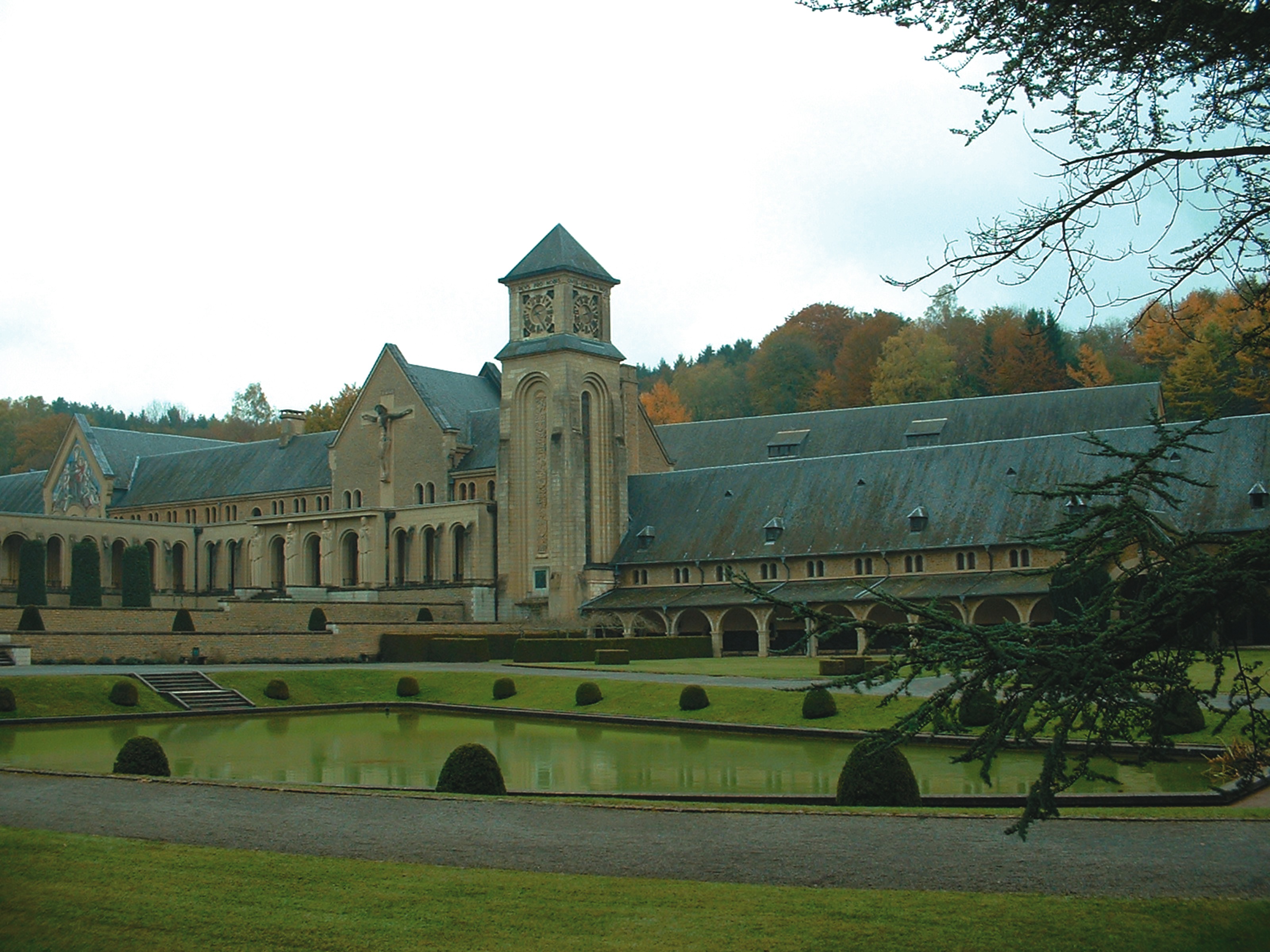Beer, brewed by monks? The very concept might shock some people, especially in our alcohol-phobic society. But northern Europe has a long history of monastic brewing, stretching back as early as the seventh century AD.
Almost every Benedictine abbey or monastery had its own brewery.

Modern Orval Abbey (Charles D. Cook)
Beer was a staple beverage in the Middle Ages. Since the brewing process kills most of the microbes that might harm people, beer was much safer than water. The everyday beers were likely relatively low in alcohol, similar to the “session” beers of modern times. Just as well, since the quantities consumed were ample for clergy and laity alike. At the Council of Aix Chapelle in the year 813, the canons were allotted 4 liters of ale per day, while some nunneries allowed their sisters up to 7 liters per day. Almost every Benedictine abbey or monastery had its own brewery.
Monks brewed beer for the table and to sustain themselves during the Lenten fast. They needed a fortifying drink to keep their strength up during the 40 days before Easter. Beer, always unfiltered and unpasteurized, was full of nutrients: it was liquid bread.
Monastic brewing also provided a service. Travelers often stayed at inns run by the religious orders, which usually offered amenities like cheese, bread and beer. These guests, in turn, made donations to the order.
First, the Cistercians, Then, the Trappists
In 1098 Father Robertus founded a new abbey at Citeaux in France. The Latin name for Citeaux is Cistercium; thus, these brothers were referred to as “Cistercians.” Reacting against the corruption of the day, the Cistercians adopted an austere lifestyle, taking vows of poverty and obedience. In 1677, Abbot Armand-Jean De Rance of the La Grande Trappe Monastery in Normandy, France, added the vow of silence, which the monks believe brings them closer to God.
The monks at La Grande Trappe fled the French Revolution in the early 1790s but the monastery survived. The term “Trappist” was coined from the abbey name and has remained in usage for members of the religious order adhering to the stern rules first instituted by Abbot Rance.
A Strict Tradition
To be certified as an official Trappist brewery, strict rules must be met: 1) the brewery must be located on the grounds of the abbey, within its walls; 2) the production of beer must be overseen by a monk or abbot; 3) all the profits from beer sales must go to charitable work. When these conditions are met, the brewery can use the Authentic Trappist Product logo. First instituted on December 1, 1997, this “Appellation Controlee” distinguishes the breweries from those that imply their beers are monastic in origin, but in reality are not. It also is used on other Trappist products, such as cheese.
Today, there are six Trappist abbeys with breweries. In Flemish-speaking Flanders, there are Achel (St. Benedictusabdij de Achelse Kluis, the newest addition to the group); Westmalle (Abdij der Trappisten van Westmalle); and Westvleteren (Sint-Sixtus Trappistenabdij). In French-speaking Wallonia are Chimay (Abbaye Notre Dame de Scourmont); Orval (Abbaye Notre Dame d’ Orval); and Rochefort (Abbaye Notre Dame de St.-Remy).
The Konigshoeven monastery near Tilburg in the Netherlands, commonly called La Trappe after the original monastery in Normandy, brewed authentic Trappist beer until recently. Unfortunately, the beers are no longer brewed under the control of the monks and have lost their certification.
I recently visited Orval, Rochefort, and Westmalle, for a glimpse into this rich cultural and brewing tradition.










